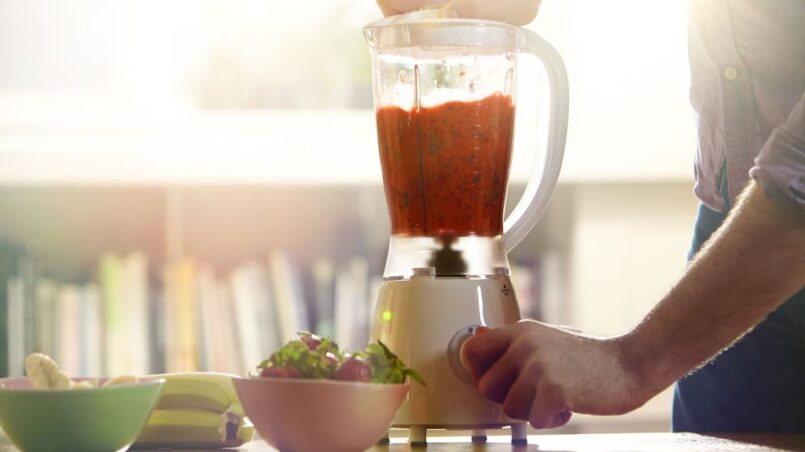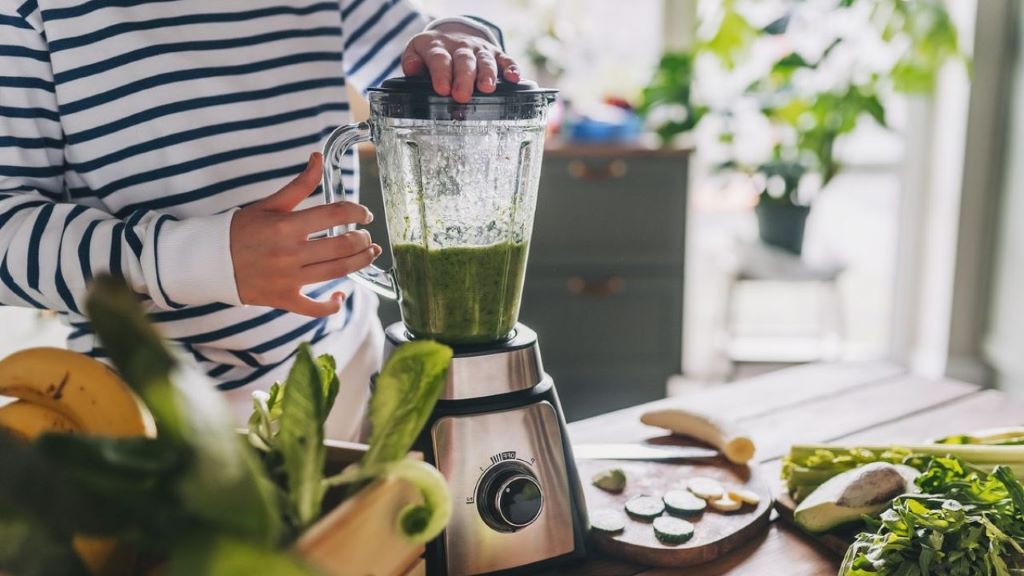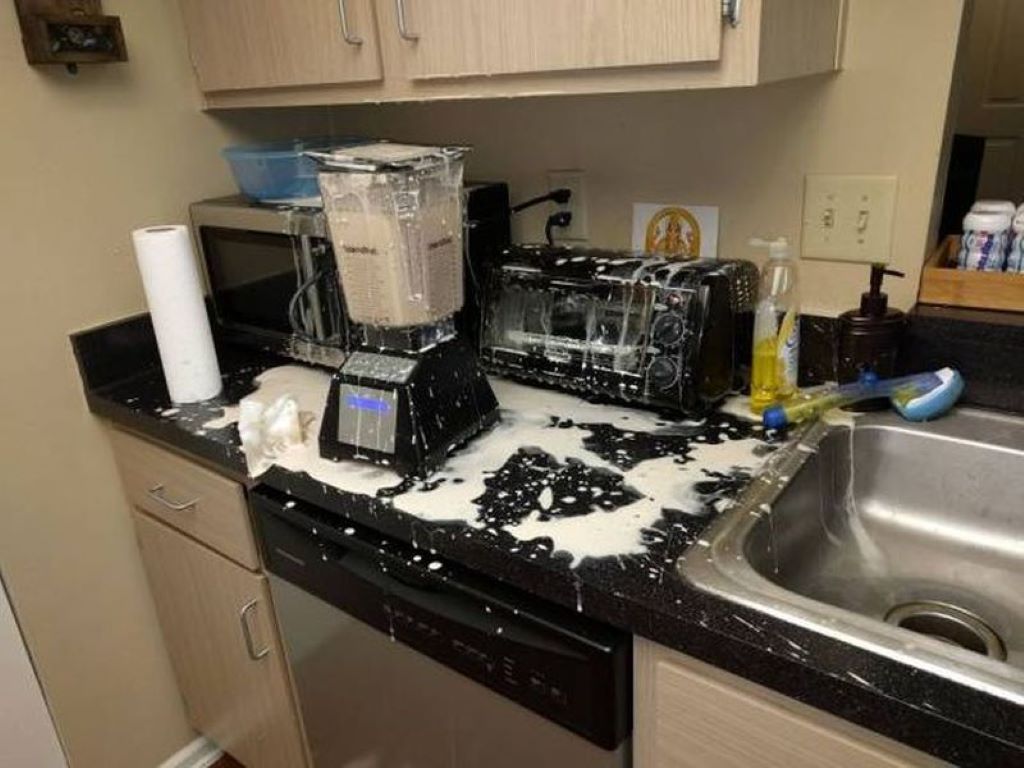Hey there, blender enthusiast! Are you tired of your blender collecting dust on the countertop because you only use it for making smoothies? Well, it’s time to dust it off and put it to work because blenders can do so much more than just blend fruits and yogurt. In this guide, we’re going to dive into the world of blender versatility, exploring the many creative ways you can use this kitchen powerhouse.
Making Magic in the Kitchen with Your Blender
- Creamy Soups and Velvety Sauces
Imagine whipping up a delicious, velvety tomato bisque or a rich and creamy Alfredo sauce in just minutes. Your blender can transform cooked vegetables, broth, and seasonings into silky-smooth soups and sauces. No more lumps or clumps!
Pro Tip: After blending, return the mixture to a pot and gently heat to your desired temperature. - Nut Butter Nirvana
Forget store-bought nut butter with added preservatives. With your blender, you can create your own custom nut butters. Whether it’s almond, peanut, or cashew, simply toss in your favorite nuts, add a pinch of salt or honey for flavor, and blend until it reaches your desired consistency. Creamy or chunky—it’s up to you!
Pro Tip: Roast the nuts beforehand for an extra depth of flavor. - Smooth as Silk Hummus
Love hummus? You can whip up the creamiest hummus ever with your blender. Just combine chickpeas, tahini, lemon juice, garlic, and a drizzle of olive oil. Blend until smooth, and you’ve got a tasty dip or spread for your veggies or pita.
Pro Tip: Customize with herbs or spices for unique flavors.
- Mouthwatering Salsas and Dips
Salsa, guacamole, and other dips are a breeze with your blender. Toss in fresh tomatoes, onions, cilantro, and jalapeños for a zesty salsa, or avocado, lime, and garlic for guacamole. Press the pulse button for that perfect chunky texture.
Pro Tip: Don’t forget to taste test and adjust seasoning as needed. - Velvet Smoothie Bowls
Okay, we can’t forget our beloved smoothies, but let’s take them up a notch. Pour your smoothie into a bowl and add a delightful array of toppings like granola, chia seeds, fresh fruit, and a drizzle of honey. It’s like a work of art you can eat!
Pro Tip: Experiment with different combinations for texture and flavor. - Bread Crumbs and Croutons
No need to buy breadcrumbs or croutons when you can make your own. Just toss stale bread into your blender and pulse until you have fine breadcrumbs or chunky croutons. Perfect for adding that crispy touch to your salads and casseroles.
Pro Tip: Add herbs and spices to your breadcrumbs for extra flavor. - Homemade Nut Milk
Say goodbye to store-bought almond or cashew milk with additives. Blend your choice of nuts with water, strain the mixture through a nut milk bag or fine sieve, and voilà—fresh, preservative-free nut milk that’s perfect for coffee, cereal, or baking.
Pro Tip: Sweeten your nut milk with dates or honey if desired. - Frozen Treats Galore
Who doesn’t love a frozen treat on a hot day? Your blender can make delicious and healthier versions of ice cream and sorbet. Blend frozen fruit with a touch of honey or yogurt for a guilt-free dessert that’s sure to satisfy your sweet tooth.
Pro Tip: Try mixing different fruits for exciting flavor combinations. - Fluffy Pancakes and Waffles
Make your weekend breakfasts extra special with pancakes and waffles made from scratch. Your blender can effortlessly mix the batter, ensuring a smooth and lump-free consistency. Pour it straight onto the griddle, and you’re on your way to breakfast bliss.
Pro Tip: Experiment with add-ins like blueberries or chocolate chips. - Homemade Baby Food
If you’re a parent, you’ll love this one. Your blender can help you create nutritious and preservative-free baby food. Just steam and blend fruits, vegetables, and grains to suit your baby’s stage of development. You’ll know exactly what goes into your little one’s tummy!
Pro Tip: Freeze in ice cube trays for convenient portioning.
Troubleshooting Common Blender Challenges
Now that we’ve explored all these exciting ways to use your blender, let’s address a few common challenges you might encounter:
1. Blender Not Blending Properly
Issue: Sometimes, your blender might struggle to blend ingredients evenly, leaving chunks behind.
Solution: Start by adding liquids first, followed by soft and then hard ingredients. Cut larger items into smaller pieces to ease the blending process. If all else fails, stop the blender, scrape down the sides, and give it another whirl.
2. Overblending and Heating
Issue: Overblending can lead to a change in texture or even heat up the mixture due to friction.
Solution: Use the pulse function intermittently when blending to avoid overprocessing. If your mixture becomes too warm, allow it to cool before continuing.
3. Blades Not Catching Ingredients
Issue: Sometimes, ingredients can get stuck beneath the blades, causing the blender to stall.
Solution: Pause blending, turn off the blender, and shake or tap the container gently to redistribute the ingredients. You can also add a little more liquid to help things flow smoothly.
4. Leaking Blender
Issue: You may notice liquids leaking from the bottom of the blender, creating a mess.
Solution: Check that the blender’s seal or gasket is intact. If it’s damaged, replace it. Also, make sure you haven’t overfilled the blender beyond its maximum capacity.
5. Difficulty Cleaning the Blender
Issue: Cleaning all the nooks and crannies of your blender can be a chore.
Solution: After use, rinse the blender immediately with warm, soapy water. For stubborn residue, blend a mixture of warm water and a drop of dish soap. Be cautious when cleaning the blade assembly; it’s sharp!
FAQs
Q1: Can I use a regular blender for making hot soups?
A: Yes, you can! Many blenders are designed to handle hot liquids safely. However, to avoid steam buildup, remove the center cap from the blender lid and cover the opening with a clean kitchen towel while blending hot ingredients.
Q2: Can I use my blender for grinding coffee beans?
A: Absolutely! Your blender can grind coffee beans to your desired coarseness. Just make sure it’s thoroughly cleaned afterward to avoid any residual coffee flavor in your next blend.
Q3: Is it safe to blend hot liquids in a plastic blender jar?
A: It’s generally safe as long as you’re using a high-quality, heat-resistant blender jar. However, be cautious with older or low-quality blenders, as they may not handle hot liquids as well.
Q4: What’s the best way to clean my blender thoroughly?
A: The easiest way to clean your blender is to rinse it immediately after use with warm, soapy water. For tough spots, blend warm water and a drop of dish soap. Just be careful when cleaning the blade assembly.
Q5: Can I use a blender to make homemade nut flours?
A: Absolutely! Blenders are great for making nut flours like almond flour or cashew flour. Simply pulse the nuts until you achieve the desired consistency. Just be cautious not to overblend, or you might end up with nut butter!
In conclusion,
Your blender is not just a one-trick pony for smoothies—it’s a versatile kitchen tool that can simplify your cooking and open up a world of culinary possibilities. From creamy soups to homemade nut butter and everything in between, your blender is ready to help you create delicious meals with ease. So go ahead, unleash your creativity in the kitchen, and be your trusty sidekick in your culinary adventures!
















